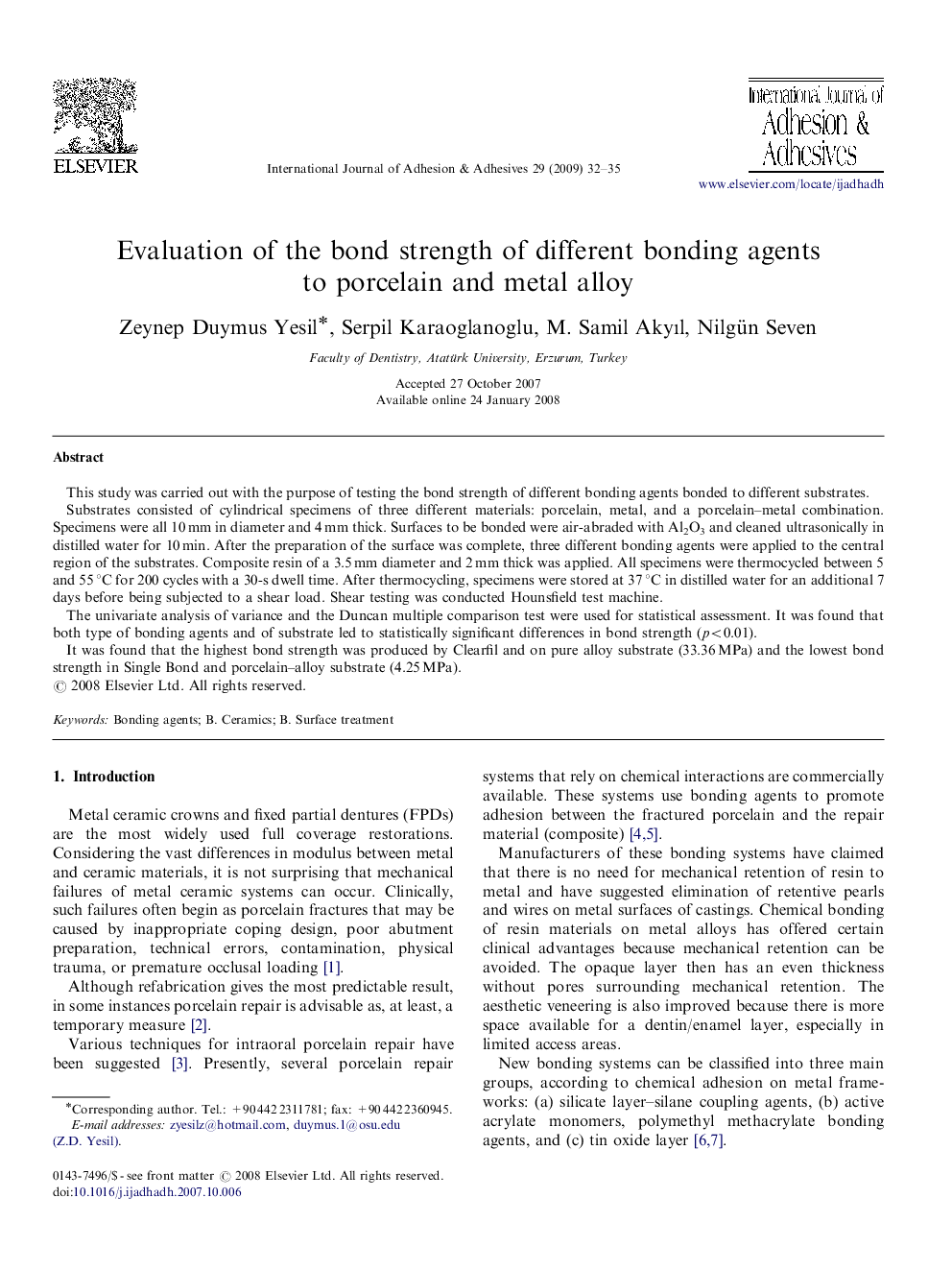| Article ID | Journal | Published Year | Pages | File Type |
|---|---|---|---|---|
| 777466 | International Journal of Adhesion and Adhesives | 2009 | 4 Pages |
This study was carried out with the purpose of testing the bond strength of different bonding agents bonded to different substrates.Substrates consisted of cylindrical specimens of three different materials: porcelain, metal, and a porcelain–metal combination. Specimens were all 10 mm in diameter and 4 mm thick. Surfaces to be bonded were air-abraded with Al2O3 and cleaned ultrasonically in distilled water for 10 min. After the preparation of the surface was complete, three different bonding agents were applied to the central region of the substrates. Composite resin of a 3.5 mm diameter and 2 mm thick was applied. All specimens were thermocycled between 5 and 55 °C for 200 cycles with a 30-s dwell time. After thermocycling, specimens were stored at 37 °C in distilled water for an additional 7 days before being subjected to a shear load. Shear testing was conducted Hounsfield test machine.The univariate analysis of variance and the Duncan multiple comparison test were used for statistical assessment. It was found that both type of bonding agents and of substrate led to statistically significant differences in bond strength (p<0.01).It was found that the highest bond strength was produced by Clearfil and on pure alloy substrate (33.36 MPa) and the lowest bond strength in Single Bond and porcelain–alloy substrate (4.25 MPa).
